MENUMENU
BOOK TICKETS
DISCOUNTED ONLINE PRICE



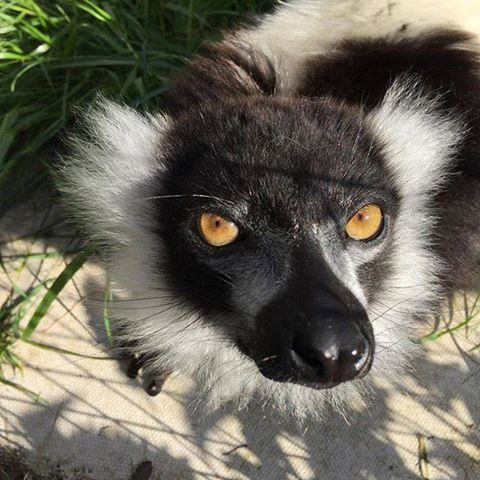

Rebecca Dorrell
The black-and-white ruffed lemur (Varecia variegata) is a Critically Endangered species of ruffed lemur, the more endangered one of two which are endemic to the island of Madagascar. Despite having a larger range than the red ruffed lemur, it has a much smaller population that is spread out, living in lower population densities and reproductively isolated. It also has less coverage and protection in large national parks than the red ruffed lemur. Three subspecies of black-and-white ruffed lemur have been recognized since the red ruffed lemur was elevated to species status in 2001.
Together with the red ruffed lemur, they are the largest extant members of the family Lemuridae, ranging in length from 100 to 120 cm (3.3 to 3.9 ft) and weighing between 3.1 and 4.1 kg (6.8 and 9.0 lb). They are arboreal, spending most of their time in the high canopy of the seasonal rainforests on the eastern side of the island. They are also diurnal, active exclusively in daylight hours. Quadrupedal locomotion is preferred in the trees and on the ground, and suspensory behavior is seen during feeding. As the most frugivorous of lemurs, the diet consists mainly of fruit, although nectar and flowers are also favored, followed by leaves and some seeds.
The black-and-white ruffed lemur has a complex social structure and is known for its loud, raucous calls.It is unusual in that it exhibits several reproductive traits typically found in small, nocturnal lemurs, such as short a gestation period, large litters and rapid maturation. In captivity, they can live up to 36 years. [Credit: Wikipedia]
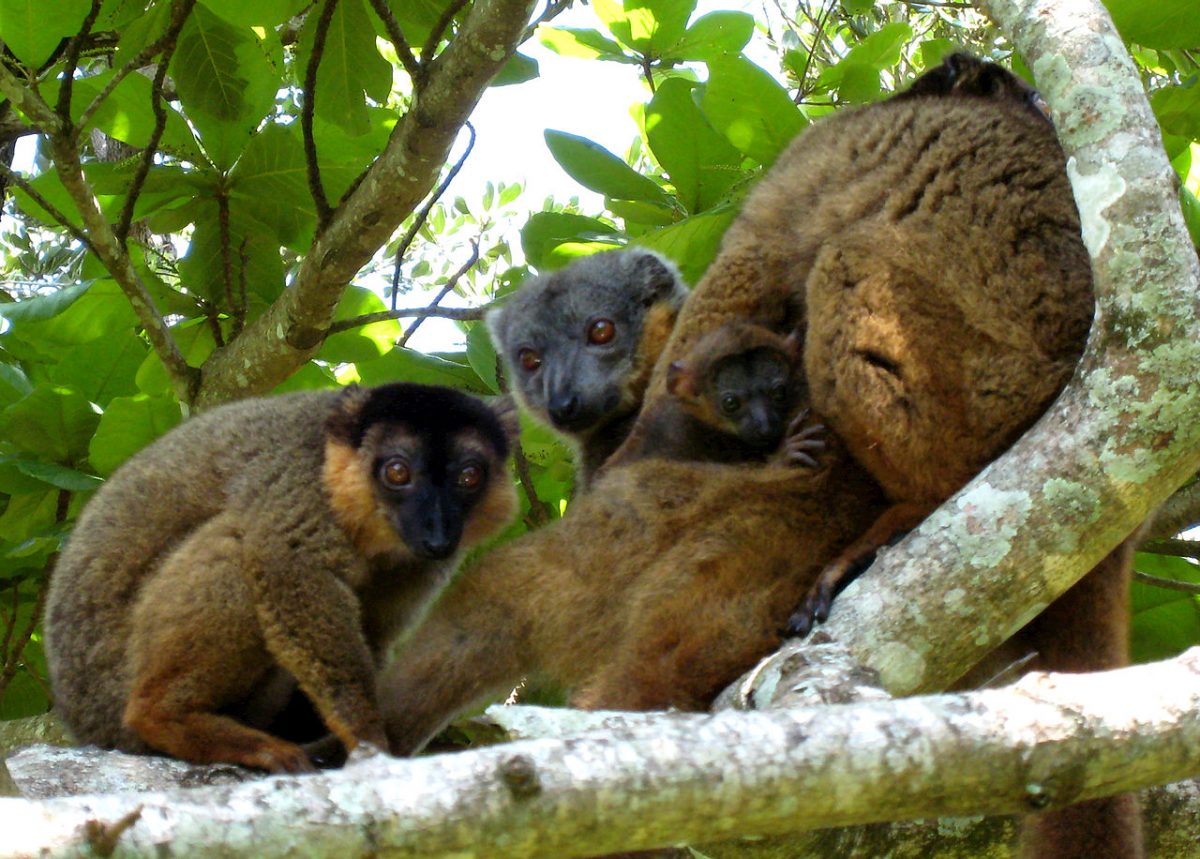

Wikipedia
Collared brown lemurs are medium-sized primates and one of twelve species of the Brown lemur. Males and females in this species look different. Males are brownish-gray on top being paler gray underneath. Their muzzle, face and crown are dark gray to black; the eyebrow patches are creamy to gray-colored and vary between individuals. Cheeks are creamy to rufous-brown and beard is thick and bushy. The tails are dark gray with a dark stripe along the spine. Females are browner and more rufous than the males on top being pale creamy-gray underneath. Tails have same color as the dorsal coat. Their face is gray, with faint gray stripe extending over crown. Cheeks are rufous-brown, but less prominent than in males. Both males and females have orange-red eyes color. [Credit: Animalia]
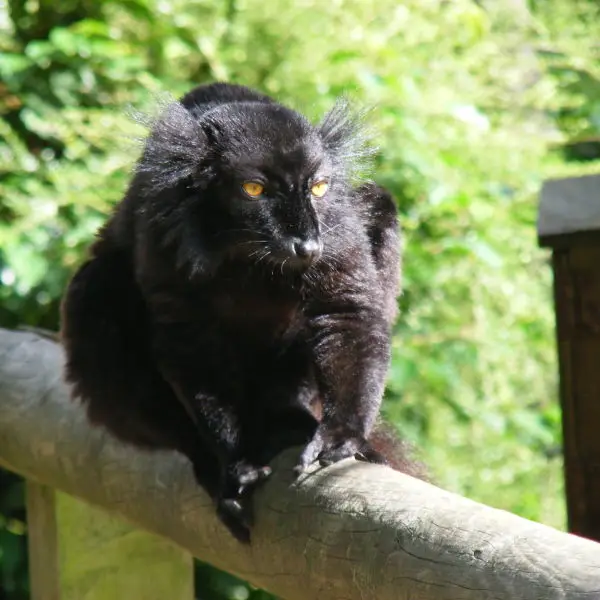

Rebecca Dorrell
The black lemur (Eulemur macaco ) is a species of lemur from the family Lemuridae. Like all lemurs, it is endemic to Madagascar. Originally, the species was thought to have two subspecies, Eulemur macaco macaco and Eulemur macaco flavifrons, both of which were elevated to species status by Mittermeier et al. in 2008 to Eulemur macaco and Eulemur flavifrons respectively. The most startling difference between the two species is the eye colour; Eulemur flavifrons, the blue-eyed black lemur, has blue eyes, while Eulemur macaco, the black lemur, has brown or orange eyes, and also has ear tufts. [Credit: Animalia]
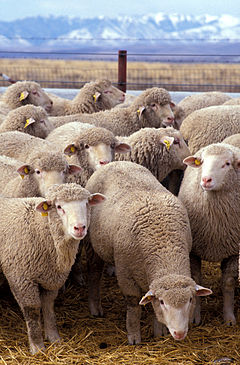

Wikipedia
The sheep (Ovis aries) is a quadrupedal, ruminant mammal typically kept as livestock. Like most ruminants, sheep are members of the order Artiodactyla, the even-toed ungulates. Although the name “sheep” applies to many species in the genus Ovis, in everyday usage it almost always refers to Ovis aries. Numbering a little over one billion, domestic sheep are also the most numerous species of sheep. An adult female sheep is referred to as a ewe, an intact male as a ram or occasionally a tup, a castrated male as a wether, and a younger sheep as a lamb. [Credit: Wikipedia]
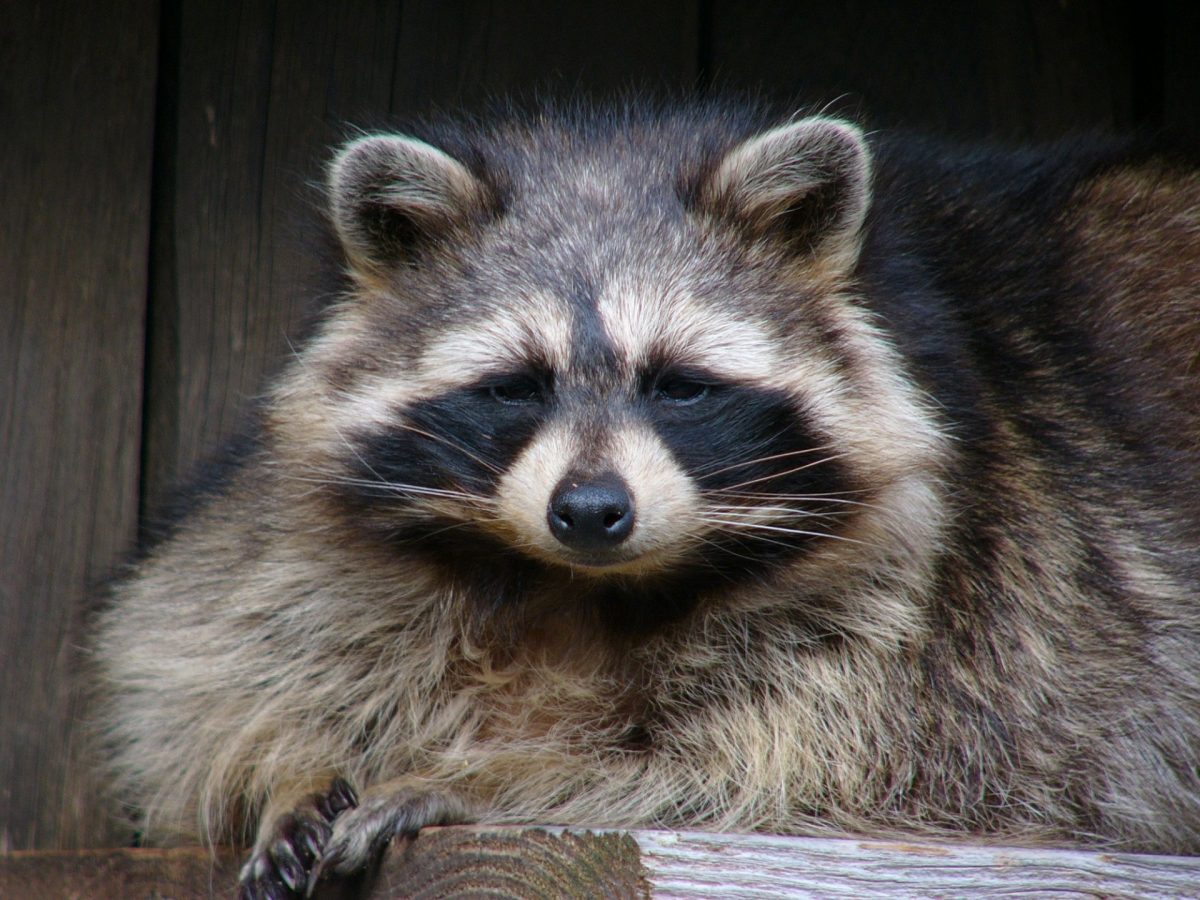

Rebecca Dorrell
The raccoon (Procyon lotor), is a medium-sized mammal native to North America. The raccoon is the largest of the procyonid family, having a body length of 40 to 70 cm (16 to 28 in) and a body weight of 3.5 to 9 kg (8 to 20 lb). Its grayish coat mostly consists of dense underfur which insulates it against cold weather. Two of the raccoon’s most distinctive features are its extremely dexterous front paws and its facial mask, which are themes in the mythology of several Native American ethnic groups. Raccoons are noted for their intelligence, with studies showing that they are able to remember the solution to tasks for up to three years.[8] The diet of the omnivorous raccoon, which is usually nocturnal, consists of about 40% invertebrates, 33% plant foods, and 27% vertebrates.
The original habitats of the raccoon are deciduous and mixed forests, but due to their adaptability they have extended their range to mountainous areas, coastal marshes, and urban areas, where some homeowners consider them to be pests. As a result of escapes and deliberate introductions in the mid-20th century, raccoons are now also distributed across mainland Europe, Caucasia, and Japan.
Though previously thought to be solitary, there is now evidence that raccoons engage in gender-specific social behavior. Related females often share a common area, while unrelated males live together in groups of up to four animals to maintain their positions against foreign males during the mating season, and other potential invaders. Home range sizes vary anywhere from 3 hectares (7.4 acres) for females in cities to 5,000 hectares (12,000 acres) for males in prairies. After a gestation period of about 65 days, two to five young, known as “kits”, are born in spring. The kits are subsequently raised by their mother until dispersal in late fall. Although captive raccoons have been known to live over 20 years, their life expectancy in the wild is only 1.8 to 3.1 years. In many areas, hunting and vehicular injury are the two most common causes of death. [Credit: Wikipedia]
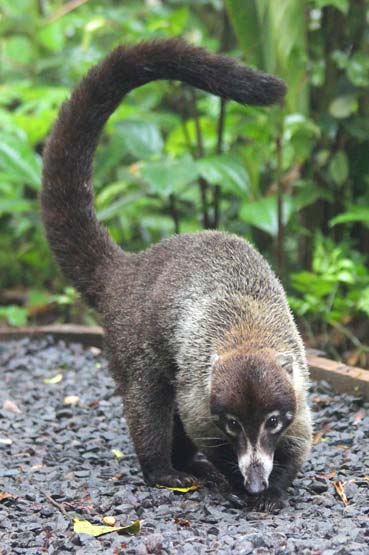

Image Source © Wikipedia
Coatis, genera Nasua and Nasuella, also known as the coatimundi hog-nosed coon, Mexican tejón, cholugo, or moncún, Guatemalan and Costa Rican pizote, Colombian cusumbo, and other names, are members of the raccoon family (Procyonidae). They are diurnal mammals native to South America, Central America, and south-western North America. The term is reported to be derived from the Tupi language (Brazil). [credits: Wikipedia]


Image Source © Wikipedia
The ostrich or common ostrich (Struthio camelus) is either one or two species of large flightless birds native to Africa, the only living member(s) of the genus Struthio, which is in the ratite family. In 2014, the Somali ostrich (Struthio molybdophanes) was recognised as a distinct species.
The ostrich shares the order Struthioniformes with the kiwis, emus, rheas and cassowaries. However, phylogenetic studies have shown that it is the basal extant member of Palaeognathae and is thus equally closely related to flighted tinamous. It is distinctive in its appearance, with a long neck and legs, and can run at up to about 70 km/h (19 m/s; 43 mph), the fastest land speed of any bird. The ostrich is the largest living species of bird and lays the largest eggs of any living bird (extinct elephant birds of Madagascar and the giant moa of New Zealand laid larger eggs). [credits: Wikipedia]
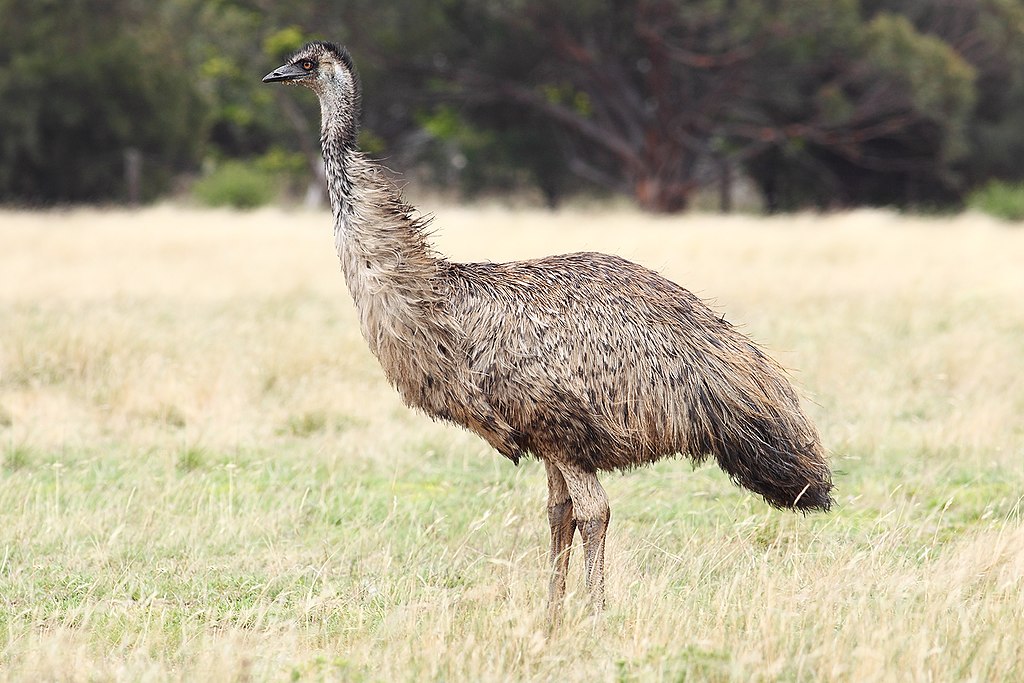

Wikipedia
The emu (Dromaius novaehollandiae) is the second-largest living bird by height, after its ratite relative, the ostrich. It is endemic to Australia where it is the largest native bird and the only extant member of the genus Dromaius. The emu’s range covers most of mainland Australia, but the Tasmanian emu and King Island emu subspecies became extinct after the European settlement of Australia in 1788. The bird is sufficiently common for it to be rated as a least-concern species by the International Union for Conservation of Nature.
Emus are soft-feathered, brown, flightless birds with long necks and legs, and can reach up to 1.9 metres (6.2 ft) in height. Emus can travel great distances, and when necessary can sprint at 50 km/h (31 mph); they forage for a variety of plants and insects, but have been known to go for weeks without eating. They drink infrequently, but take in copious amounts of water when the opportunity arises.
Breeding takes place in May and June, and fighting among females for a mate is common. Females can mate several times and lay several clutches of eggs in one season. The male does the incubation; during this process he hardly eats or drinks and loses a significant amount of weight. The eggs hatch after around eight weeks, and the young are nurtured by their fathers. They reach full size after around six months, but can remain as a family unit until the next breeding season. The emu is an important cultural icon of Australia, appearing on the coat of arms and various coins. The bird features prominently in Indigenous Australian mythology. [Credit: Wikipedia]
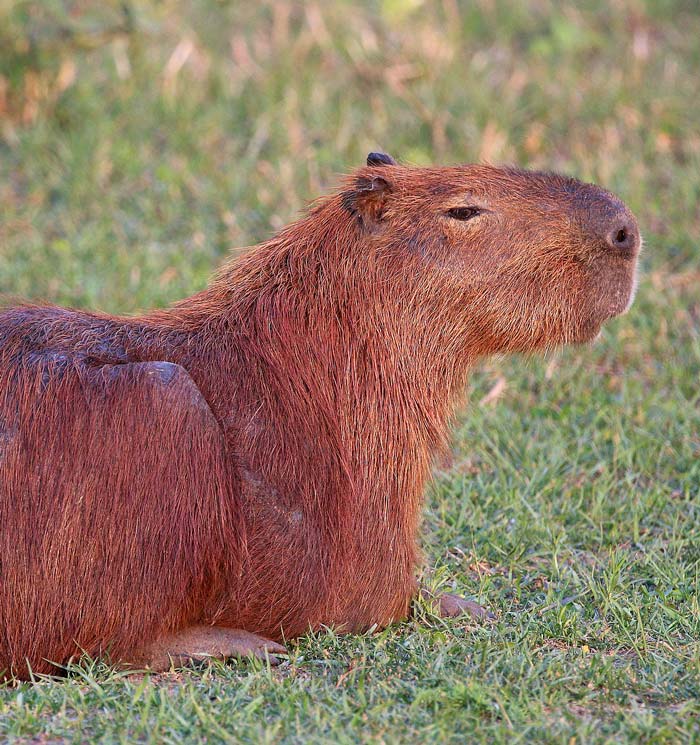

Image Source © Wikipedia
The capybara (Hydrochoerus hydrochaeris) is a large rodent of the genus Hydrochoerus of which the only other extant member is the lesser capybara (Hydrochoerus isthmius). The capybara is the largest rodent in the world. Close relatives are guinea pigs and rock cavies, and it is more distantly related to the agouti, chinchillas, and the coypu.
Native to South America, the capybara inhabits savannas and dense forests and lives near bodies of water. It is a highly social species and can be found in groups as large as 100 individuals, but usually lives in groups of 10–20 individuals. The capybara is not a threatened species and is hunted for its meat and hide and also for a grease from its thick fatty skin which is used in the pharmaceutical trade. [credits: Wikipedia]
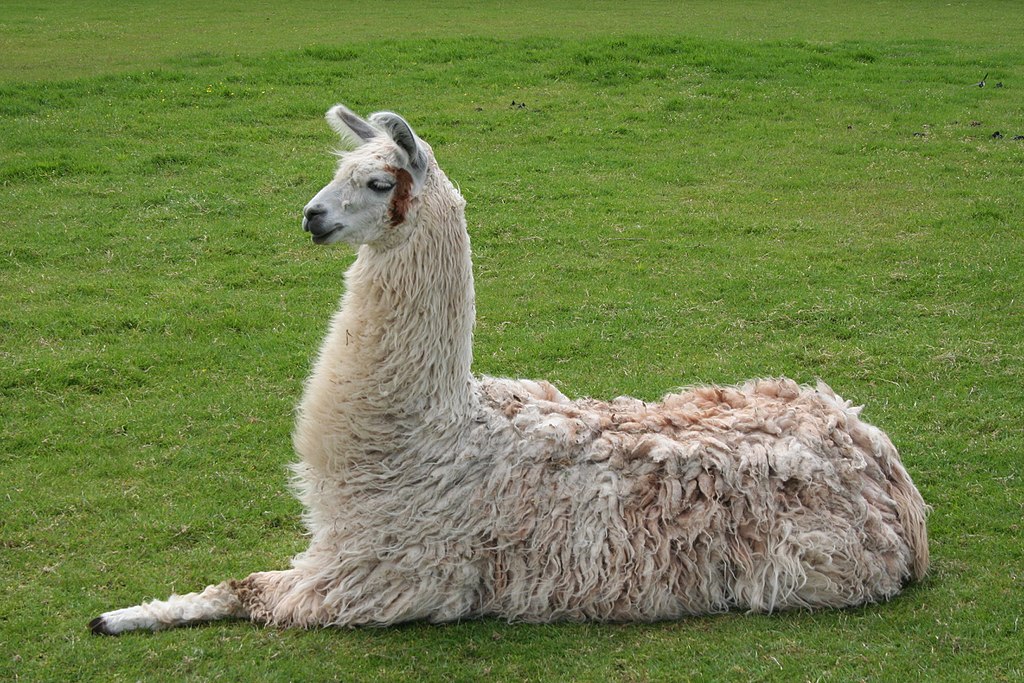

Wikipedia
The llama is a domesticated South Americancamelid, widely used as a meat and pack animal by Andean cultures since the Pre-Columbian era.
The height of a full-grown, full-size llama is 1.7 to 1.8 m (5.6 to 5.9 ft) tall at the top of the head, and can weigh between 130 and 200 kg (290 and 440 lb). At birth, a baby llama (called a cria) can weigh between 9 and 14 kg (20 and 31 lb). Llamas typically live for 15 to 25 years, with some individuals surviving 30 years or more.
They are very social animals and live with other llamas as a herd. The wool produced by a llama is very soft and lanolin-free. Llamas are intelligent and can learn simple tasks after a few repetitions. When using a pack, they can carry about 25 to 30% of their body weight for 8 to 13 km (5–8 miles).
The name llama (in the past also spelled ‘lama’ or ‘glama’) was adopted by European settlers from native Peruvians.
Llamas appear to have originated from the central plains of North America about 40 million years ago. They migrated to South America about three million years ago during the Great American Interchange. By the end of the last ice age(10,000–12,000 years ago), camelids were extinct in North America. As of 2007, there were over seven million llamas and alpacas in South America, and due to importation from South America in the late 20th century, there are now over 158,000 llamas and 100,000 alpacas in the United States and Canada. [credits: Wikipedia]
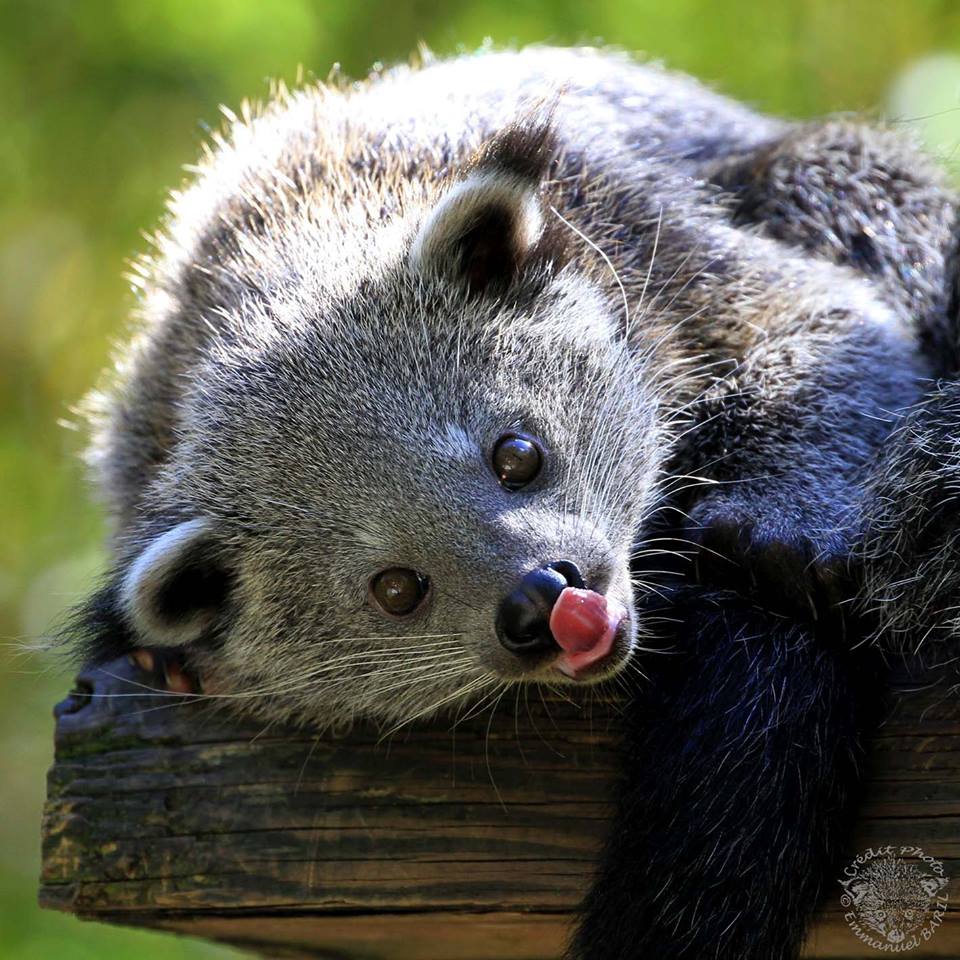

Image Source © en.abconservation.org
The body of the binturong is long and heavy, with short, stout legs. It has a thick fur of strong black hair. The bushy and prehensile tail is thick at the root, gradually diminishing in size to the extremity, where it curls inwards. The muzzle is short and pointed, somewhat turned up at the nose, and is covered with bristly hairs, brown at the points, which lengthen as they diverge, and form a peculiar radiated circle round the face.
The eyes are large, black and prominent. The ears are short, rounded, edged with white, and terminated by tufts of black hair. There are six short rounded incisors in each jaw, two canines, which are long and sharp, and six molars on each side. The hair on the legs is short and of a yellowish tinge. The feet are five-toed, with large strong claws; the soles are bare, and applied to the ground throughout the whole of their length; the hind ones are longer than the fore. [credits: Wikipedia]